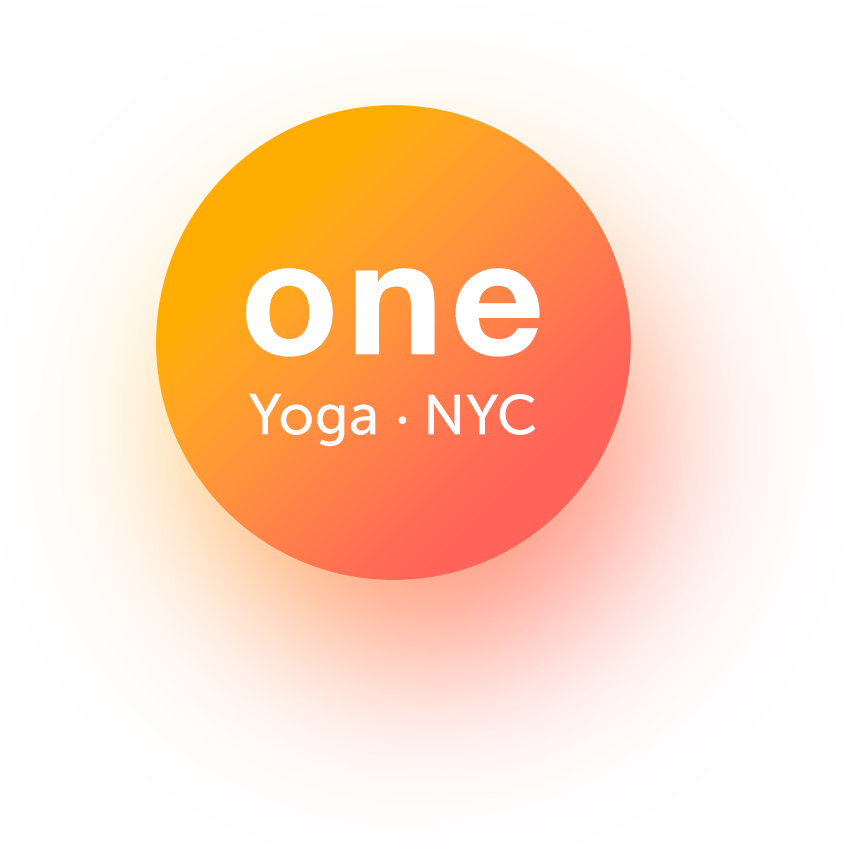oneyoganyc@gmail.com
NY,NY 121 Fulton Street
NY,NY 121 Fulton Street
How to breathe properly during yoga classes?
Proper breathing. We hear this phrase more and more often in the modern world, but still many remain in the dark about its peculiarity and importance. After all, breathing is a natural process that accompanies a person's life from birth, and it is so natural that we simply forget how important it is for our health and emotional state.
Nevertheless, even in ancient times, people thought about it and learned to influence their body and soul with the help of breathing. Breathing techniques in yoga are of particular importance. Pranayama is the practice of yogic breathing, the exercises of which are primarily aimed at the ability to control and regulate breathing.
How to learn this? Where to start and which practices to choose?
Specialists at the Studio One Yoga NYC in New York prepared answers to these questions in their blog.
Start practicing yoga today, master breathing techniques, and very soon you will see positive changes in your body and mood. In our yoga studio in New York we offer an individual approach to everyone who comes to practice yoga, so our instructors will always help you decide on the direction and help you make a training program.
Nevertheless, even in ancient times, people thought about it and learned to influence their body and soul with the help of breathing. Breathing techniques in yoga are of particular importance. Pranayama is the practice of yogic breathing, the exercises of which are primarily aimed at the ability to control and regulate breathing.
How to learn this? Where to start and which practices to choose?
Specialists at the Studio One Yoga NYC in New York prepared answers to these questions in their blog.
Start practicing yoga today, master breathing techniques, and very soon you will see positive changes in your body and mood. In our yoga studio in New York we offer an individual approach to everyone who comes to practice yoga, so our instructors will always help you decide on the direction and help you make a training program.
Breathing techniques: effect
Before you learn how to breathe during yoga classes, you need to understand why it is necessary. As experience shows, even the simplest yoga and meditation practice show results. Here are some examples:
Before you learn how to breathe during yoga classes, you need to understand why it is necessary. As experience shows, even the simplest yoga and meditation practice show results. Here are some examples:
- First of all, the tension of the nervous system is relieved, which is especially important for a modern person who is constantly in a state of chronic fatigue and stressful situations.
- Sleep improves, insomnia goes away, in the morning a person feels rested and cheerful, there is more strength for active doing.
- Metabolic processes accelerate in the body, which has a positive effect on weight loss.
- The work of internal organs normalizes.

Proper breathing
To learn how to breathe properly, it is necessary to master full yoga breathing. This is the main point of practice. Then you can start practicing pranayama – breathing techniques that have a beneficial effect on the respiratory system, and are also the basis for wellness meditation .
There are several basic breathing techniques that are important to understand before you start practicing pranayama:
There is a concept – "full yogic breathing", which combines all three previous types. It is considered the most effective and harmonious. It activates the entire respiratory system, every muscle and cell, expanding the chest to its anatomical volume. The powerful work of the respiratory muscles allows you to increase the capacity of the lungs.
Applying three techniques in sequence, the lungs open and the body receives the maximum amount of oxygen.
To learn how to breathe properly, it is necessary to master full yoga breathing. This is the main point of practice. Then you can start practicing pranayama – breathing techniques that have a beneficial effect on the respiratory system, and are also the basis for wellness meditation .
There are several basic breathing techniques that are important to understand before you start practicing pranayama:
- Clavicular breathing (it is also called upper) – when inhaling occurs with the tension of the shoulder muscles, the collarbones rise, letting in some air, but the abdomen and diaphragm are motionless. Such breathing is involved in performing inverted asanas.
- Rib (middle) is thoracic, diaphragmatic breathing, when, due to the tension of the muscles of the thoracic region, the diaphragm expands, air enters the lungs. The abdominal muscles are relaxed at the same time. With such breathing, the upper part of the lungs are ventilated. It can be observed when performing asanas "on hold", for example, uddiyana bandha.
- Abdomen (lower) – when inhaling, the diaphragmatic muscles are tense and open downwards, the ribs are pressed against the outer wall of the abdominal cavity and push it forward. When exhaling, the muscles of the diaphragm relax, the ribs close, and air is pushed out of the lungs. This technique promotes good ventilation of the lower parts of the lungs. Thanks to this method, the abdominal organs and the gastrointestinal tract receive oxygen.
There is a concept – "full yogic breathing", which combines all three previous types. It is considered the most effective and harmonious. It activates the entire respiratory system, every muscle and cell, expanding the chest to its anatomical volume. The powerful work of the respiratory muscles allows you to increase the capacity of the lungs.
Applying three techniques in sequence, the lungs open and the body receives the maximum amount of oxygen.
How to breathe properly with the diaphragm?
As a rule, people unfamiliar with yoga breathing breathe using only 10-15 percent of their lungs, and in stressful situations – superficially and quickly, not allowing the lungs to fill with oxygen enough. To master full yoga breathing, you need to involve the diaphragm.
To feel the diaphragm, you can use several techniques .
With such breathing, more air is drawn into the lungs and the body receives more oxygen.
As a rule, people unfamiliar with yoga breathing breathe using only 10-15 percent of their lungs, and in stressful situations – superficially and quickly, not allowing the lungs to fill with oxygen enough. To master full yoga breathing, you need to involve the diaphragm.
To feel the diaphragm, you can use several techniques .
- Get on all fours, relax your stomach and breathe quickly, like a dog. But experts advise to be careful with this exercise, so as not to overdo it with hyperventilation of the lungs.
- A safer way is to lie on your back and put something light in the abdominal area, for example, a book. When breathing with the diaphragm, it will rise and fall with each inhalation and exhalation.
With such breathing, more air is drawn into the lungs and the body receives more oxygen.

How to breathe properly with your stomach?
It should be noted right away that such breathing physiologically helps the body to relieve tension, since the diaphragm begins to work, and this automatically removes excess load from the heart muscle.
Unlike diaphragmatic breathing, abdominal breathing raises the abdominal wall forward and with deep breathing, shifts the internal organs down the abdomen.
The practice of full yoga breathing is ideal to learn how to breathe with your stomach. With regular classes, this will become a habit and abdominal breathing can be turned on even when you are not practicing yoga.
Thanks to full breathing, the body is actively cleansed. With a long exhalation, the decomposition products (carbon dioxide) are removed. The lungs are better ventilated, the entire respiratory system is strengthened. More oxygen enters the bloodstream, brain nutrition improves, and the nervous system is unloaded.
If you are just starting to master meditation techniques, it is worth using pranayama techniques at the first stage. This makes it possible to learn to concentrate on breathing. And this, in turn, allows you to feel the air flow itself, as well as your own body sensations inside and outside. Thoughts will also be focused on these feelings. Breath control during yoga classes is the key to successful practice, without it, people struggle to perform exercises.
It should be noted right away that such breathing physiologically helps the body to relieve tension, since the diaphragm begins to work, and this automatically removes excess load from the heart muscle.
Unlike diaphragmatic breathing, abdominal breathing raises the abdominal wall forward and with deep breathing, shifts the internal organs down the abdomen.
The practice of full yoga breathing is ideal to learn how to breathe with your stomach. With regular classes, this will become a habit and abdominal breathing can be turned on even when you are not practicing yoga.
Thanks to full breathing, the body is actively cleansed. With a long exhalation, the decomposition products (carbon dioxide) are removed. The lungs are better ventilated, the entire respiratory system is strengthened. More oxygen enters the bloodstream, brain nutrition improves, and the nervous system is unloaded.
If you are just starting to master meditation techniques, it is worth using pranayama techniques at the first stage. This makes it possible to learn to concentrate on breathing. And this, in turn, allows you to feel the air flow itself, as well as your own body sensations inside and outside. Thoughts will also be focused on these feelings. Breath control during yoga classes is the key to successful practice, without it, people struggle to perform exercises.
Development of concentration will allow you to feel more free over time, dissolving consciousness and moving to a deeper level of meditation.
In general, the habit of breathing deeply triggers a lot of energy. Over time, health is normalized, the immune system becomes stronger and, in general, the quality of life improves.
Do you want to learn how to breathe properly, discover yoga and change your life for the better?
At One Yoga NYC Studio in New York. Our trainers will help you decide on a yoga class, which are most suitable for you. A team of experienced instructors who have been developing yoga schools in Europe for more than 12 years and have a wealth of practical experience works in our studio. We approach each student individually, selecting a set of exercises and helping to make a schedule of classes. To sign up for a first lesson and or find out more please contact our administrators through the form on the website or call us.
We look forward to guiding you on your steps toward better breathing, thinking and living.
In general, the habit of breathing deeply triggers a lot of energy. Over time, health is normalized, the immune system becomes stronger and, in general, the quality of life improves.
Do you want to learn how to breathe properly, discover yoga and change your life for the better?
At One Yoga NYC Studio in New York. Our trainers will help you decide on a yoga class, which are most suitable for you. A team of experienced instructors who have been developing yoga schools in Europe for more than 12 years and have a wealth of practical experience works in our studio. We approach each student individually, selecting a set of exercises and helping to make a schedule of classes. To sign up for a first lesson and or find out more please contact our administrators through the form on the website or call us.
We look forward to guiding you on your steps toward better breathing, thinking and living.


